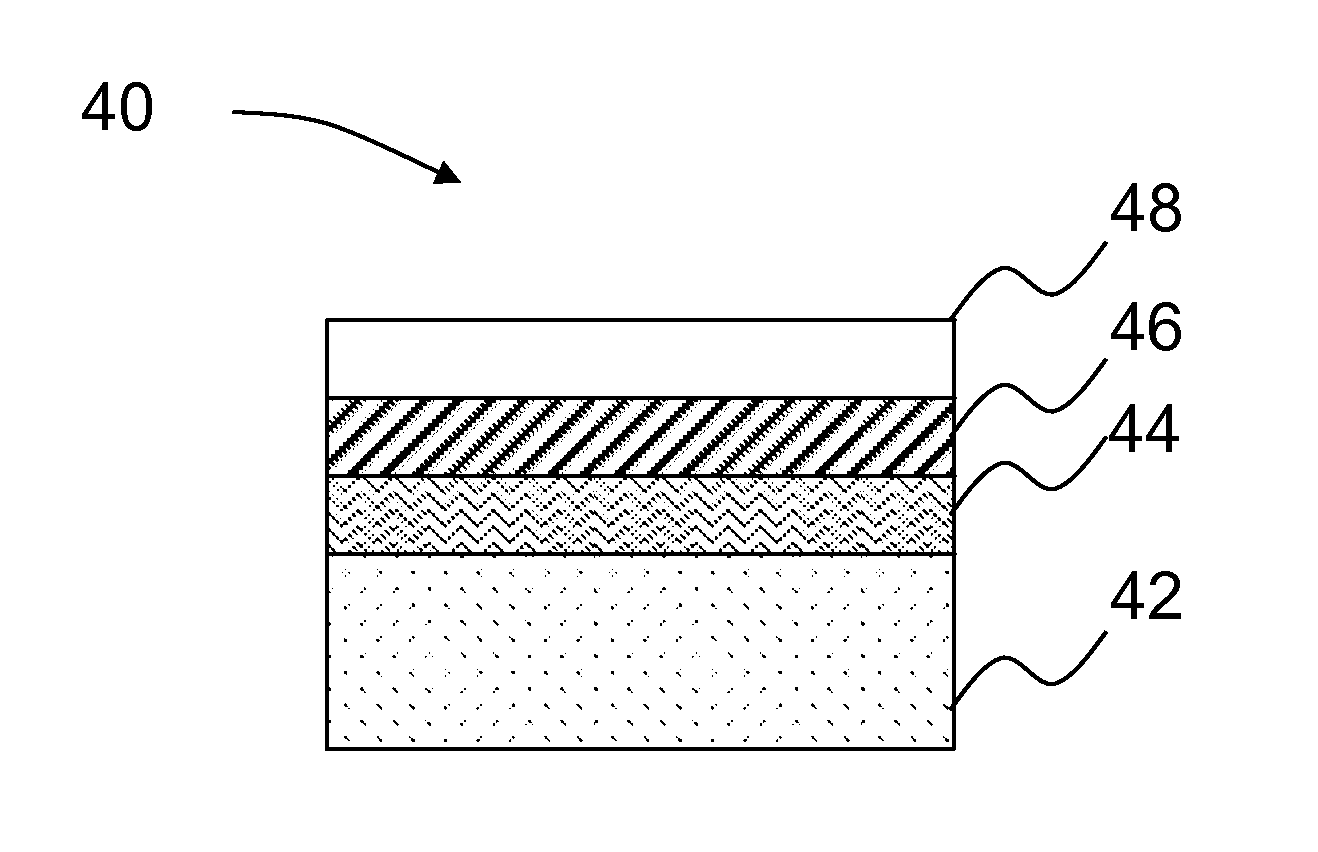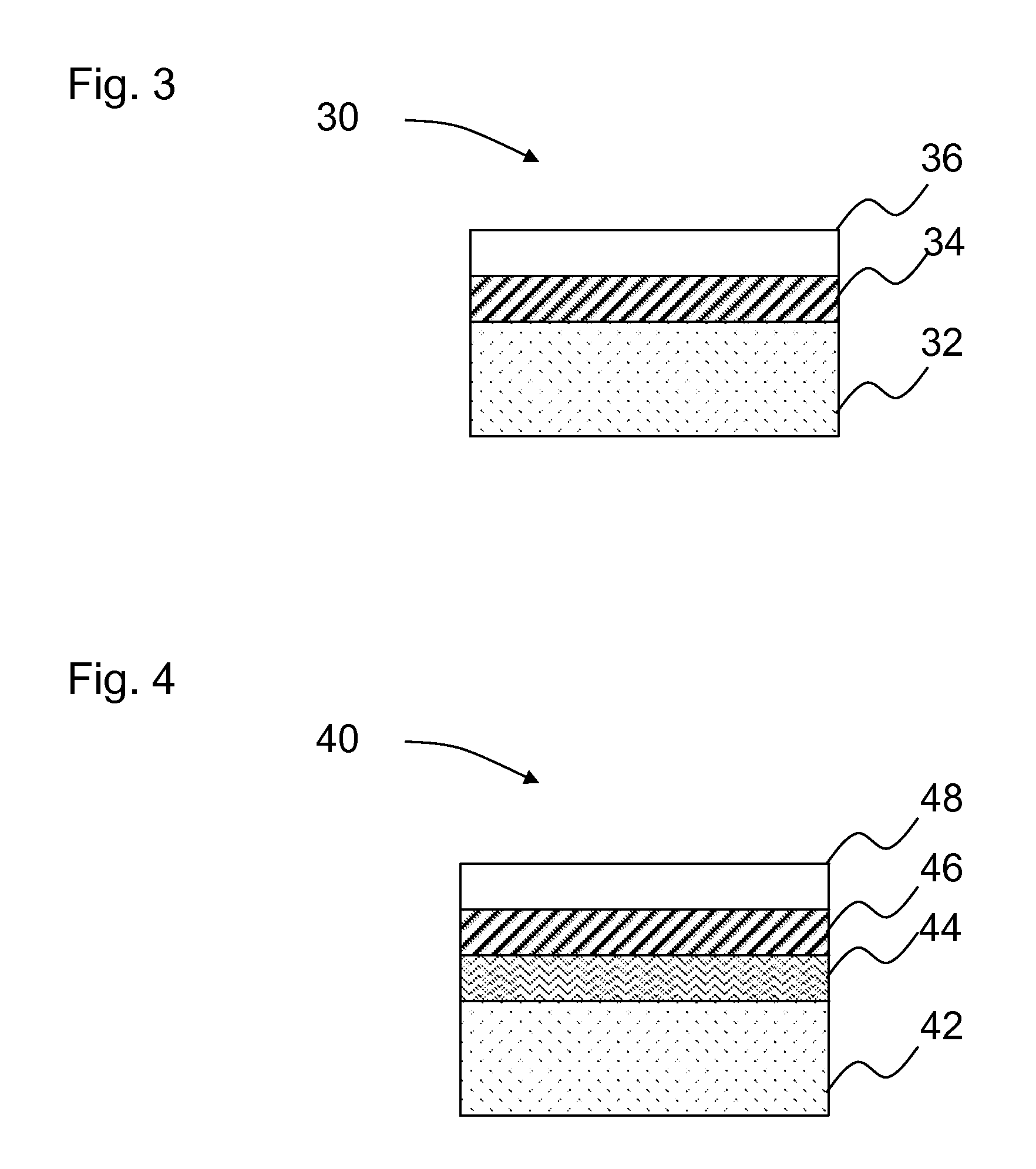Inorganic phosphorescent article and method for making same
- Summary
- Abstract
- Description
- Claims
- Application Information
AI Technical Summary
Benefits of technology
Problems solved by technology
Method used
Image
Examples
Embodiment Construction
[0025]Generally, an inorganic phosphorescent article of the present invention may be used in any location where it is desirous to have low level lighting such as a part of an emergency lighting system. FIG. 1 generally illustrates an inorganic phosphorescent article 10 of the present invention which includes a formed phosphorescent layer 12. Phosphorescent layer 12 is preferably made where the majority of the layer 12 comprises photoluminescent phosphors powders of rare earth doped alkaline earth aluminates or rare earth doped alkaline earth silicates or zinc sulfide doped with copper or combinations thereof. Some of these rare earth doped alkaline earth aluminates include formulations of strontium aluminate (SrAl2O4), calcium aluminate (CaAl2O4) and barium aluminate (BaAl2O4) or mixed combination. Of the aluminates, strontium aluminate is preferred. Dopants for the aforementioned aluminate formulations include rare earth elements such as europium (Eu), cerium (Ce), praseodymium (Pr...
PUM
| Property | Measurement | Unit |
|---|---|---|
| Percent by mass | aaaaa | aaaaa |
| Electric charge | aaaaa | aaaaa |
| Electric charge | aaaaa | aaaaa |
Abstract
Description
Claims
Application Information
 Login to View More
Login to View More - Generate Ideas
- Intellectual Property
- Life Sciences
- Materials
- Tech Scout
- Unparalleled Data Quality
- Higher Quality Content
- 60% Fewer Hallucinations
Browse by: Latest US Patents, China's latest patents, Technical Efficacy Thesaurus, Application Domain, Technology Topic, Popular Technical Reports.
© 2025 PatSnap. All rights reserved.Legal|Privacy policy|Modern Slavery Act Transparency Statement|Sitemap|About US| Contact US: help@patsnap.com



